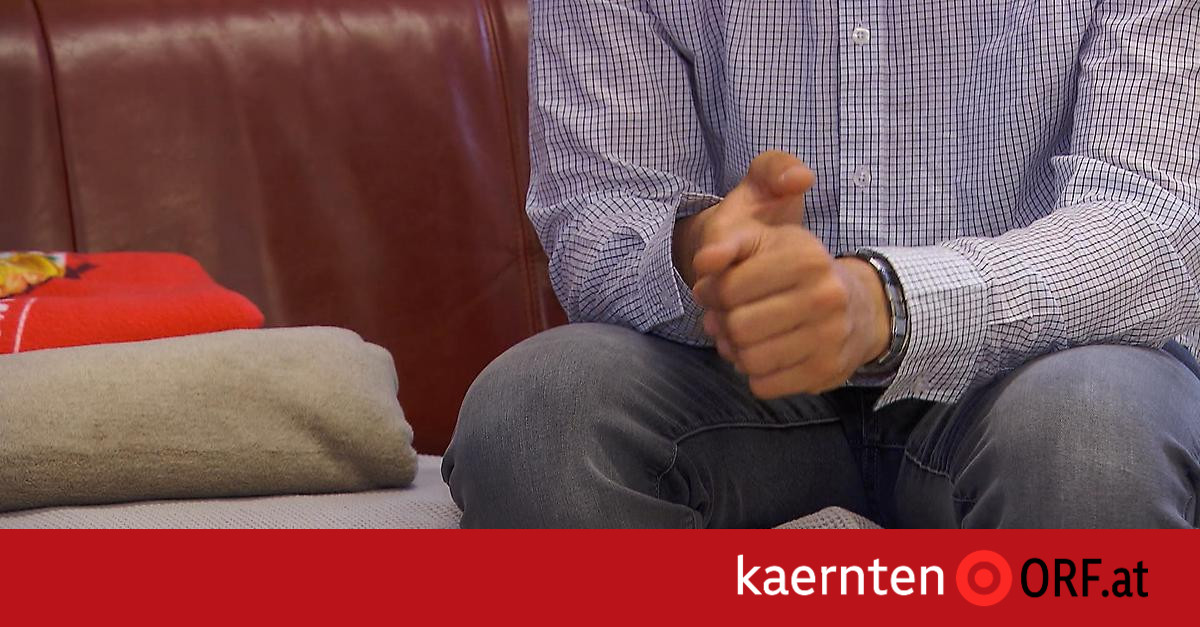Young people today move out of their homes by the age of 25 on average. In the best case scenario, young people in out-of-home care should be self-employed by the age of 18, although they in particular often have a difficult start in life. At the age of 18, the statutory end of care, but no later than 21 years of age, those affected “disappear” from the statistics.
Many struggle with problems
Ricardo is one of those affected. He has been struggling with cognitive problems since a childhood trauma and is looked after by JUNO (Youth Emergency Sleeping Center): “There are phases when I don’t notice anything. Ever since I experienced that back then, I’ve felt restricted. And that’s the way it is. “
Young people with a wide variety of backgrounds come to the Villach emergency shelter, says Birgit Seymann from JUNO Villach: “We have had young people from families where there was enough money. But if the framework conditions are not right, if there is unrest and conflicts in the social environment, school is put on the back burner. “
Expert: Clearly disadvantaged
Scientist Stephan Sting researched the educational level of young people in out-of-home care. The result: “That Careleavers are clearly disadvantaged in terms of education. They are disadvantaged by the fact that they mostly acquire low qualifications. The child and youth welfare system is already looking to ensure that they get vocational qualifications, but higher education is less supported in the system. “

“Pressure on institutions”
Young people who are housed outside of Germany are more likely to do an apprenticeship than the Matura. According to Diakonie, this also has structural causes. Matthias Liebenwein is the department head in the Diakonie: “We have a lot of pressure for our adolescents and young adults – our employees also feel this – to make sure that they can live independently by the age of 18 and 21 at the latest. In terms of formal law, the possibility of support through child and youth welfare ends. “

Diakonie and other social institutions are calling for a change in the law so that young people up to 26 can be supported, said Liebenwein.
74 million euros for child and youth welfare
Social Affairs Officer Beate Prettner (SPÖ) said that the number 21 was used as a guide: “Of course we won’t leave anyone behind if there is a perspective on how we can take further supportive measures.” what level of education Careleaver will ultimately achieve. Although 74 million euros flow into child and youth welfare every year.
Education researcher Sting said it would be interesting to say that you invest a lot of money and many years in a young person and then you no longer care what happens to it. Some make it to university only on the second educational path. But in a roundabout way and on their own, some with self-support grants. A tough road with no support from home.
The payment
Of the 1,073 children in external care, 293 are foster children, 222 of them are still of compulsory education. 78 are over 15 years old, 30 of them are currently attending an AHS or BHS.
780 children are accommodated in the facilities, 750 of them are still of compulsory schooling. In this group, 370 are over 15 years old, 74 of them attend an AHS or BHS. 26 percent or 118 school children have special educational needs (SEN), for example with learning difficulties.
What happens after training is not recorded
As a result, in the near future of four to five years, when compulsory schooling ends at the age of 15, a maximum of 104 of currently 448 foster children no longer required to attend school will also end their school education with a Matura (AHS / BHS). It is unclear how many foster children will go on to study because there are no figures. Every foster child with an apprenticeship, AHS or BHS then has a completed training and automatically falls out of full education or the care position.
–


